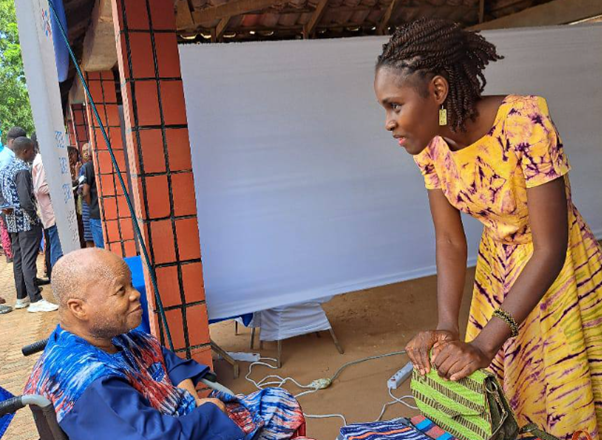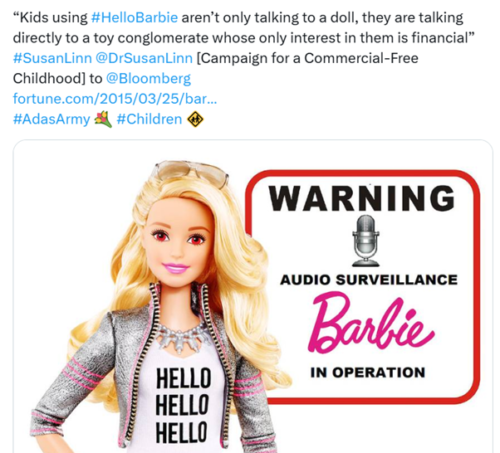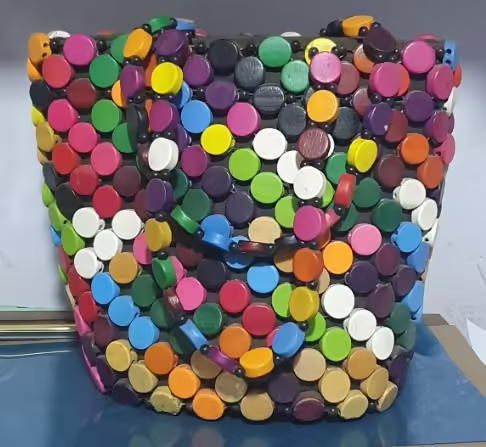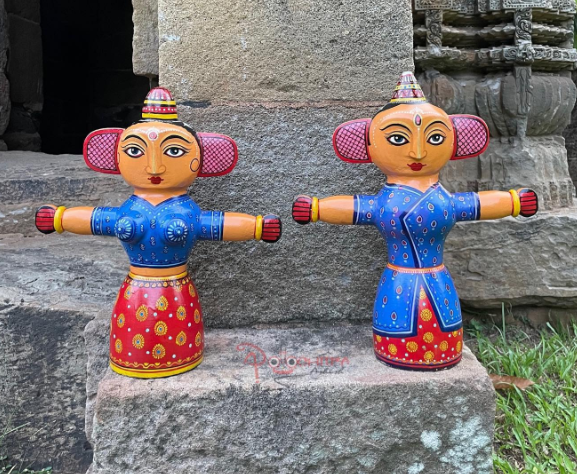Burkina Faso and Benin offer a glimpse into the diverse and thriving textile traditions of West Africa. The artisans behind Faso Danfani textiles cotton hand spinning are preserving their cultural heritage and contributing to a more sustainable and ethical fashion industry. By supporting these artisans and their work, we can help ensure that these ancient crafts continue to thrive for generations to come.
Mme Flora Lankoande, the founder of the social enterprise CABES GIE in Burkina Faso, captivated visitors with her stunning Faso Danfani textiles. Unique fabrics woven from organic cotton. Sustainably grown in the region. The process of creating Faso Danfani textiles involves several intricate steps, including:
Faso Danfani textiles have renowned durability. Also their breathability and unique aesthetic. Vibrant colors and intricate patterns inspired by traditional African motifs. Reflecting the rich cultural heritage of Burkina Faso.

Mme Dehanatou Tairou Issa, director of Espace Tissage de Djougou in Benin, demonstrated the meticulous process of transforming raw cotton seeds into beautiful thread. This time-honored craft involves several steps:
Cotton hand spinning is a labor-intensive process that requires patience and precision. The resulting thread is strong, durable, and has a unique texture that adds character to the woven fabrics.
These two countries, Burkina Faso and Benin, offer a glimpse into the diverse and thriving textile traditions of West Africa. The artisans behind Faso Danfani textiles and cotton hand spinning are preserving their cultural heritage and contributing to a more sustainable and ethical fashion industry. By supporting these artisans and their work, we can help ensure that these ancient crafts continue to thrive for generations to come.
Read more about the History of Cotton
Mattel's monopoly in the toy industry, particularly its dominance in the doll market with the iconic Barbie brand, has raised concerns about its impact on competition, consumer choice, and the broader toy industry. Let's delve into the intricacies of Mattel's influence, the rise of AI-powered dolls, and the growing appeal of artisan alternatives.
Introduced in 1959, Barbie revolutionized the doll industry. Her aspirational lifestyle, diverse career paths, and ever-evolving fashion sense resonated with generations of children. This cultural phenomenon propelled Mattel to a leading position, shaping the way young girls envisioned their futures.
However, Barbie’s influence has not been entirely positive. Apart from the fact that Barbie has links to Hitler! Information courtesy of our friend, ACE of Spades. Critics argue that her unrealistic body proportions and narrow beauty standards perpetuate harmful stereotypes and unrealistic expectations, particularly for young girls. The homogenization of beauty ideals, driven by mass-produced dolls like Barbie, can limit children's imagination and creativity.
Mattel's dominance has been further strengthened through strategic acquisitions and brand extensions. The acquisition of American Girl in 1998 expanded its reach to a younger demographic, while the introduction of brands like Hot Wheels and Fisher-Price diversified its product portfolio.
More recently, Mattel has ventured into the realm of artificial intelligence with its AI-powered Barbie doll, 'Hello Barbie'. While this innovation promises interactive play experiences, it also raises concerns about privacy, data security, and the potential for excessive screen time. As AI technology advances, it is crucial to consider the ethical implications and potential negative impacts on children's development.

Mattel's market dominance has limited the availability of diverse and affordable doll options. Smaller competitors may struggle to gain traction in a market dominated by a powerful player like Mattel. This lack of competition can stifle innovation, reduce consumer choice, and ultimately harm the overall quality of products available to children.
Mattel's monopoly in the toy industry, particularly its dominance in the doll market with the iconic Barbie brand, has raised concerns about its impact on competition, consumer choice, and the broader toy industry. Let's delve into the intricacies of Mattel's influence, the rise of AI-powered dolls, and the growing appeal of artisan alternatives.
Mattel's dominance has been further strengthened through strategic acquisitions and brand extensions. The acquisition of American Girl in 1998 expanded its reach to a younger demographic, while the introduction of brands like Hot Wheels and Fisher-Price diversified its product portfolio.
In recent years, there has been a growing interest in artisan dolls. These handcrafted creations offer a unique and personalized experience, often featuring intricate details, diverse body types, and realistic facial expressions. Artisan dolls can spark children's imaginations, encourage creativity, and promote a more inclusive and body-positive view of beauty.
The limitations of mass-produced dolls extend beyond aesthetics. Artists like Sheila Pree Bright, in her powerful series "Plastic Bodies," have used dolls to challenge the racist and sexist stereotypes perpetuated by these toys. By combining images of real women with doll faces, Pree Bright forces viewers to confront the unrealistic beauty standards imposed on women, particularly women of color. This was explored by Sheila Pree Bright in her Plastic Bodies exhibition. Additionally, the exhibition "Dolls in Contemporary Art: More Than Child's Play" highlights how artists are using dolls to explore complex themes of identity, gender, and social norms. By showcasing the power of dolls in contemporary art, these exhibits demonstrate the potential for dolls to be more than just playthings, but instruments for social commentary and creative expression.
This link between artistry and representation is precisely what fuels the rise of artisan dolls. These handcrafted creations offer a platform for diverse narratives, celebrating different cultures, body types, and abilities. In contrast to the homogenized world of mass-produced dolls, artisan dolls empower children to see themselves and others reflected in the toys they play with, fostering a more inclusive and accepting world.
By embracing the beauty and diversity of artisan dolls, we can empower children to dream big, think creatively, and appreciate the value of individuality. Let's break free from the confines of mass-produced, homogenized toys and embrace the artistry and soul of handcrafted dolls.
By supporting artisan doll makers, we can help to foster a more diverse and inclusive toy industry, one that values creativity, sustainability, and the unique potential of every child. Let's reclaim the magic of doll play and inspire the next generation of dreamers and doers.
The boll weevil, a small, grayish-brown beetle with a surprisingly large impact, has left an indelible mark on the history of agriculture, particularly cotton cultivation. Native to Central America, this insidious pest migrated northward, wreaking havoc on cotton crops throughout the southern United States. Its impact was so profound that it reshaped the economic and social landscape of the region.

Learn about its history, its devastating effects on the Southern United States, and the ongoing battle to control this persistent threat. For a charming children's perspective on this historical pest, check out Bow the Handsome Boll Weevil book, a delightful story exploring the world of cotton and fashion choices!
The boll weevil's journey to the United States began in the late 19th century. It gradually made its way northward, crossing the Rio Grande into Texas in 1892. Once established, the beetle rapidly spread across the cotton-growing regions of the South.
The boll weevil's feeding habits are particularly destructive. Adult beetles and their larvae feed on cotton squares (immature bolls) and buds, stunting plant growth and reducing yield. Infested bolls often fail to open, leading to significant losses for farmers.
The boll weevil's invasion had a devastating impact on the Southern economy, which was heavily reliant on cotton. The once-thriving cotton industry suffered significant decline as farmers struggled to control the pest. Many farmers were forced to abandon their land and seek alternative livelihoods.
The social implications were equally profound. The decline of the cotton industry led to rural poverty, out-migration, and social unrest. The region experienced a period of economic depression, and many communities were forced to adapt to new economic realities.
Farmers and scientists alike engaged in a relentless battle against the boll weevil. A variety of control methods were employed, including cultural practices, chemical insecticides, and biological control agents. While these efforts helped to mitigate the damage, the boll weevil remained a persistent threat for decades.
The development of more effective insecticides, such as DDT, in the mid-20th century provided a temporary respite. However, the widespread use of these chemicals also had negative environmental consequences.
Over time, the cotton industry in the Southern United States has diversified, reducing its reliance on a single crop. The development of new cotton varieties with increased resistance to pests, as well as improved pest management practices, has helped to control the boll weevil and other pests.
Today, while the boll weevil remains a threat, its impact is significantly reduced compared to the early 20th century. However, it serves as a reminder of the devastating consequences that invasive pests can have on agriculture and society.
The boll weevil's legacy offers valuable lessons for modern agriculture. It underscores the importance of integrated pest management, a strategy that combines multiple control methods to minimize the use of harmful chemicals. Additionally, it highlights the need for ongoing research and development to develop innovative solutions to emerging pest problems.
By understanding the history of the boll weevil, we can better appreciate the challenges faced by farmers and scientists in the past. By applying the lessons learned, we can work towards a more sustainable and resilient agricultural future.
The plight of bees, those industrious insects buzzing through our gardens and fields, is a growing concern. As primary pollinators, they are the architects of biodiversity, ensuring the reproduction of countless plant species, including many that sustain human life. However, a silent crisis is unfolding, a crisis that threatens the very existence of these vital creatures.

The plight of bees, essential pollinators facing a crisis, threatens our food security and ecosystem balance. The decline of bees, a significant threat to our planet, has cascading effects on our environment and food security. As pollinators disappear, so too do the fruits, vegetables, nuts, and seeds that depend on them. This loss of biodiversity can lead to food shortages, economic instability, and a decline in ecosystem resilience. Moreover, the intricate web of life, where plants and pollinators are interconnected, could unravel, with far-reaching consequences for both human society and the natural world.
To address this crisis, it is imperative to take immediate action:
By working together, we can safeguard the future of bees and ensure a sustainable planet Earth for generations to come. Let us not underestimate the power of these tiny creatures and the vital role they play in our world.
In today's fast-paced, mass-produced fashion industry, there's a growing yearning for authenticity, quality, and ethical production. Artisanal production, with its focus on skilled craftsmanship, local materials, and fair labor practices, is emerging as a powerful solution to the environmental and social challenges of the fashion industry.
Artisanal production involves creating goods by hand, often using traditional techniques and tools. Artisans, skilled craftspeople, pour their heart and soul into each piece, resulting in unique, high-quality products. This approach stands in stark contrast to mass production, which often prioritizes quantity over quality and relies on automation and low-wage labor.

The fashion industry has a significant impact on the environment and society. By embracing artisanal production, brands can:
While it offers numerous benefits, it also faces challenges, such as:
By investing in training programs, supporting local artisans, and collaborating with designers, brands can overcome these hurdles and unlock the full potential.
The future of fashion lies in a harmonious blend of sustainability, ethics, and aesthetics. Artisanal production offers a promising path forward, empowering both consumers and producers to make a positive impact on the planet and society. By choosing artisanal products, we can support fair trade, reduce our environmental footprint, and embrace the beauty of handcrafted goods.
As consumers become increasingly conscious of the social and environmental implications of their choices, the demand for sustainable and ethical fashion is growing. Artisanal production, with an emphasis on quality, authenticity, and sustainability, will play a pivotal role in shaping the future of the fashion industry.
The Fight Against Plastic Pollution continues as we turn our attention to Uganda, where a similar crisis to the one witnessed in Panama is unfolding. The sheer volume of plastic bottles littering the landscape is a stark reminder of the urgent need to address this issue.
Single-use plastic has become a scourge on Earth, choking our oceans, polluting our land, and harming countless species. Just as we witnessed the devasting impact in Panama, Uganda now faces a similar crisis. The sheer volume of plastic bottles littering the landscape is a stark reminder of the urgent need to address this issue.
![Photo: Muwanika Fahad, Plastic Pollution, Uganda [Oct 2024]](https://thepeopleshub.org/wp-content/uploads/2024/10/Fight-Against-Plastic-Pollution-Muwanika-Fahad-Uganda-bags-of-trash-plastic-bottles.png)
To truly solve the problem, we must reduce the production of single-use plastic altogether. In the meantime, while we work towards a more ethical sustainable future, we can take steps to minimize our plastic footprint and support initiatives that promote recycling and upcycling.
As Muwanika's report points out, plastic bottles have become ubiquitous in Ugandan life. Their affordability and convenience have led to a widespread shift away from glass. However, this seemingly small change has resulted in a major environmental disaster. Discarded plastic bottles are now found everywhere – a grim testament to our throw-away culture.
This isn't just an aesthetic issue. Plastic pollution has a devastating impact on wildlife, ecosystems, and even human health. Animals mistake plastic for food, leading to injuries and death. Microplastics, tiny fragments of plastic, infiltrate our water systems and food chains, posing unknown long-term health risks.
But there's hope! Muwanika's report, accompanied by his efforts across social media showcasing the sheer volume of plastic waste, serves as a powerful call to action. It's a reminder that the fight against plastic pollution is about us all.
Together, we can turn this tide of plastic. Let's join Muwanika and others on Earth in making plastic bottles "useful" again – not by littering, but by finding innovative ways to reuse and recycle them.
UPDATE
Although not sustainable due to cost, we adore this piece of art that Muwanika created a few weeks later, from the bottle tops!

Let's help Uganda, one plastic bottle at a time.
In a world dominated by mass-produced plastic toys, a quiet revolution involving India's Cultural Dollmakers is taking place. A movement towards sustainable, handcrafted dolls that celebrate cultural diversity and body positivity is gaining momentum. These dolls are far more than just playthings; they are miniature ambassadors of India's rich heritage and a testament to the enduring spirit of its artisans.
One such ambassador is Vidya Prakash, a dentist turned artist. After relocating to the US, Vidya found solace in crafting miniature scenes inspired by her childhood memories in India. These miniature creations, initially used to illustrate bedtime stories for her daughter, sparked a passion for dollmaking. Vidya's dolls, made with upcycled fabrics and natural materials, are a delightful example of how sustainable practices can result in beautiful, heirloom-quality toys.
However, Vidya is just one voice in a vibrant chorus. Across India, countless artisans are keeping traditional dollmaking techniques alive. Crafting dolls that reflect the country's diverse cultures and artistic traditions.
Hailing from Andhra Pradesh, the Kondapalli Bommai are wooden dolls known for their vibrant colors and intricate designs. These dolls, traditionally depicting deities, mythological figures, and scenes from daily life, are a testament to the region's rich artistic heritage.
In Tamil Nadu, the art of Tanjore dollmaking flourishes. These exquisitely crafted dolls, adorned with real jewelry and rich fabrics, depict mythological characters and historical figures. The intricate details and vibrant colors of Tanjore dolls are a feast for the eyes.
From the state of Odisha comes the art of Pattachitra dollmaking. A vibrant art form depicting scenes from Hindu mythology. Each Pattachitra doll is a unique piece of art, carrying a story within its intricate details. Pattachitra dolls are delightful figurines crafted using the traditional Pattachitra painting style of Odisha, India.
These dolls are made from leftover cloth and are adorned with traditional Pattachitra paintings. These dolls are typically made of cloth or wood and are adorned with intricate mythological narratives and vibrant colors.

The artists meticulously hand-paint the dolls, depicting scenes from Hindu mythology, folklore, and daily life. Pattachitra dolls are not only visually appealing but also carry cultural significance, representing the rich heritage of Odisha. They make for beautiful collectibles and souvenirs, capturing the essence of this ancient Indian art form.
In West Bengal, the Dokra craft tradition produces beautiful dolls made from an alloy of brass and bell metal. These dolls, known for their dark, metallic sheen and intricate details, depict deities, animals, and figures from folklore.
These are just a few examples of the incredible diversity and talent found among India's dollmakers. Each doll represents not only a unique artistic tradition but also a connection to India's rich cultural heritage. They promote body positivity with realistic proportions and diverse ethnicities. Offering children a more inclusive representation of the world around them.
By choosing these dolls over mass-produced plastic toys, we are not just opting for sustainable and eco-friendly products; we are supporting traditional artisans. Preserving cultural heritage, offering children a healthier and more meaningful playtime experience. So, the next time you're looking for a gift for a child, consider seeking out a handcrafted Indian doll. You'll be giving them more than just a toy; you'll be giving them a piece of India's rich and vibrant story.
In today's fast-paced fashion industry, it's easy to get caught up in the latest trends and forget about the environmental and social impact of our clothing choices. However, making ethical fashion choices can have a significant positive impact on Earth and the people who produce our clothes.
One of the most important things to consider when buying clothing is the chemicals used in its production. Many clothing manufacturers use toxic chemicals that can harm the environment and the workers involved in the manufacturing process. These chemicals can be released into waterways, contaminating drinking water and harming aquatic life. They can also cause respiratory problems, skin irritation, and other health issues for workers in textile factories.
When shopping for clothing, look for brands that use organic textiles, which are grown without the use of harmful pesticides and herbicides. Check for certifications such as GOTS (Global Organic Textile Standard) or OEKO-TEX, which guarantee that textiles are free from harmful substances.
Another issue to be aware of is the use of dirty viscose in clothing. Viscose, also known as rayon or bamboo, is a popular fabric that is often used in clothing. However, the manufacturing process for viscose can be highly polluting, releasing harmful chemicals into the environment.
If you want to avoid dirty viscose, look for clothing made from lyocell, Tencel, or Monocel. These are cleaner alternatives to viscose that are produced using a more sustainable process.
In addition to avoiding toxic chemicals and dirty viscose, there are other factors to consider when being more fashionably ethical. Look for brands that are transparent about their supply chains and labor practices. Support companies that pay fair wages to their workers and ensure safe working conditions.
By making ethical fashion choices, we can help to protect the environment, support fair labor practices, and reduce our personal impact on Earth. It's a small step that can make a big difference. Let our legacy be change!